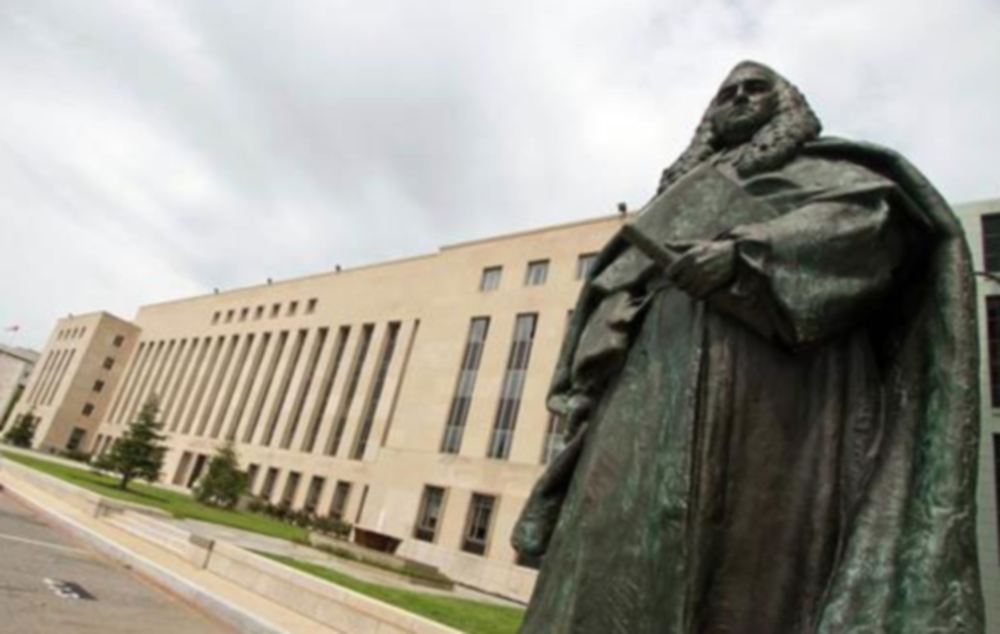The senior managers of the U.S. Postal Service have regularly made it clear that they think any new postal legislation should cede them full power to set rates, essentially cutting off the Postal Regulatory Commission at its knees. After getting a taste of new revenue infusion with the PRC’s approval of a 4.3% exigent rate in 2013, and with no reform legislation in the offing, USPS filed a petition with the D.C. Circuit Court of Appeals last year asking to have the surcharge become a permanent part of its base. Mailers simultaneously filed a brief with the same court asking, essentially, for exigency’s immediate removal.
Following an unusually lengthy deliberation period, the court last week handed down what could be characterized as a semi-Solomon decision, with the baby cut not exactly in half. It dismissed the mailers’ petition for a review of exigency and rejected the Postal Service’s “exigency forever” plea, but granted the surcharge a stay of execution.
“The Postal Service says the [Postal Regulatory] Commission’s decision did not go far enough; mailer industry groups say the Commission went too far; and the Commission says it got the order just right. We hold that the Commission’s “new normal” determination is reasonable, but its rule that lost mail volumes should be counted only once makes no sense on this record,” says the court’s decision, written by Judge Patricia Millett, a black belt in Tae Kwon Do who has argued 32 cases before the Supreme Court.
In other words, mailers can forget about the surcharge being removed in August when the total it has collected will hit $2.77 billion—the PRC’s assessment of the cost exacted upon the Postal Service by the Great Recession. The court’s decision called the PRC’s accounting faulty and ordered it to go back to the drawing board to determine what it considers a more accurate assessment of the damage. In a petition filed with the PRC just days after the court’s decision, the Postal Service estimated the damages to be at least $3.95 billion and asked the Commission to immediately delay the August remand of exigency.
For mailers, the sad news is that the reports of exigency’s death have been greatly exaggerated. With the court’s decision in hand, the PRC’s accounting and legal teams must now shift into high gear to reach a new assessment, and the Postal Service is required to give 45 days notice of the removal of the surcharge, per PRC’s original order. Exigency’s August demise is out, as is its maximum tab of $2.77 billion.
“The Postal Service is trying to make the point that, any way you cut it, it is due at least $1.2 billion more in exigent revenue than was called for in the original PRC order. And the Postal Service clearly thinks the amount will be much higher than $1.2 billion,” says D. Eadward Tree, a pseudonym for a publishing industry executive who writes an issues-oriented blog call The Dead Tree Edition.
The Postal Service and the PRC continue to differ on just what “new normal” means in regard to USPS’s business condition. The Commission said in its original exigency decision that the “new normal” has been established once most or all of the following become reality: 1) macroeconomic indicators return to “near historic positive trends”; 2) such variables project a positive change in mail volume; 3) USPS regains its ability to predict mail volumes; and 4) it becomes able to adjust to lower volumes.
The DC Circuit Court found the PRC’s “count once” rule to be deficient in determining the predictability of volumes. In assessing the limit of the surcharge, PRC declared that it would count decreased mail volume just once, in the first year in which it was a loss. Being cognizant of that loss, the Postal Service should be able to adjust its expectations, the Commission said. It added that counting beyond the first year would make it impossible for it to calculate the total amount lost by USPS due to the recession.
As noted, the court ruled that, while the PRC’s definition of “new normal” made sense, its “count once” accounting method did not. “Neither of those rationales makes sense,” Millett’s decision read, “juxtaposed against the Commission’s explanation that the ‘new normal’—not the arbitrariness of turning a calendar—defines when the Postal Service regained its ability” to predict or adjust to lower volumes.
Postal Service management believes that PRC commissioners should give new thought to the meaning of “new normal” as it seeks to satisfy the court order. “We have requested that the Commission establish a schedule for appropriate proceedings to reconsider its ‘new normal’ analysis consistent with the court’s opinion and to finally resolve the inconsistency between its finding that we could have adjusted to volume losses by 2010 with its finding elsewhere that we did all we could be expected to do in response to such losses,” USPS spokesperson Katina Fields said.
“The bottom line is that the PRC is going to have to go through the process again. It’s going to go through a comment period, it’s going to ask for more analysis from the Postal Service, and it’s going to come up with something greater than $3.2 billion,” said Hamilton Davison, president and executive director of the American Catalog Mailers Association. That amount—$3.2 billion—is the revenue figure needed by USPS to regain its $2.8 billion loss.
Exigency’s fate, then, hangs in the balance, as do the mailing plans of direct mailers and catalogers.





